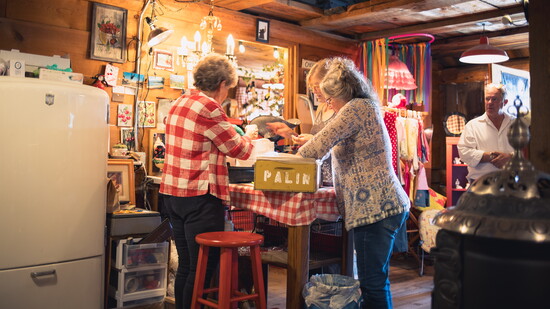Whereas Montana winters can sometimes feel drawn out and drab, summer in Montana is a veritable Eden of natural abundance—think Dixon melons, wild huckleberries, and so much more. But nothing says “summertime” in Western Montana quite like Flathead cherries. And even though the bright season is behind us, we went behind the curtain to see which fruit should be on the top of your list next year.
Take a spin down MT Highway 35, along Flathead Lake’s eastern shore, and at a certain point every July there’s a blossoming of farm stands around practically every bend in the road, each with a boatload of cherries fresh from the orchard just behind the stand. And while the profusion of cherries can be a delight to the passersby, those who seek an organic cherry will be hard pressed in that search.
As Maureen Gleason says, she and her husband Jerry’s organic orchard is one of a very few operations doing things in a more holistic way.
“There’s one north of us, and I think there’s one on Finley Point,” she says, “and to my knowledge that’s it.”
Gleason’s Cherry Orchard has been operating organically in their current location— midway between Polson and Bigfork—since 2006, while their foray into earth-friendly growing extends back even farther.
Maureen says part of the decision to pursue organic growing had a lot to do with the impact of conventional practices on their immediate environment.
“We went organic because we were living right in the middle of the orchard. They were spraying around us and we just figured that wasn’t good.”
“We like being able to have good fruit,” she continues, “because apples and strawberries and cherries are the worst-sprayed fruits, so it makes us feel good that we’re doing the right thing.”
“And we enjoy giving the public really, really good fruit, and clean fruit, so they don’t have to worry,” Jerry Gleason says. “I go into my orchards all the time and I just eat things off the trees. I don’t have to worry about it. Even though we do spray, everything we spray is certified organic by the FDA.”
One side to organic growing is the end result: cleaner air, water, and soil; pristine and delicious produce; happy customers that value all of the above. The other side is the meticulous, repetitive, and granular work of keeping an orchard running without all the workarounds that conventional growers can use.
“Way back when, people had trouble with tent caterpillars,” Jerry says. “Well, they sprayed. We had one tree that had a couple of branches with tent caterpillars, and we had to go out manually and clip them off, put them in bags, and destroy the bags, and that’s how we have to do everything.”
“We can’t just go to the garage or the barn and grab some spray and go out and take care of things,” he continues. “So, it just makes it very labor intensive, and you’ve got to be watching all the time.”
All this being considered, it’s safe to say the Gleasons consider all the extra effort they expend keeping their orchard functioning organically is more than worth it, for themselves and for their customers.
“We’re doing right by the public and we’re doing right by ourselves,” Maureen says.
“And we get a really good feeling from the public,” Jerry says. “They compliment us all the time on how beautiful the cherries are.”
“They thank us,” Maureen continues. “I get thanked all the time. And I have a lot of repeat customers.”
“We love the people that come back,” Jerry chimes in. “We have people that come back over and over. We just had a person come all the way from North Dakota to buy our cherries. And he’s been here before several times. When people do stuff like that, it just makes you say ‘holy mackerel!’ You know you’re doing things right.”
“We’re doing right by the public and we’re doing right by ourselves." Maureen Gleason
Why are Flathead cherries so special? Well, hard work takes time and nothing—especially life's sweetest things—are ever promised. A good season delivers more than just plump cherries. It brightens the spirit of lake life with the gift of abundance. With the lake moderating the region's climate, these varieties are generally available mid-July to beginning of September: Lapin, Sweetheart, and Rainier.
